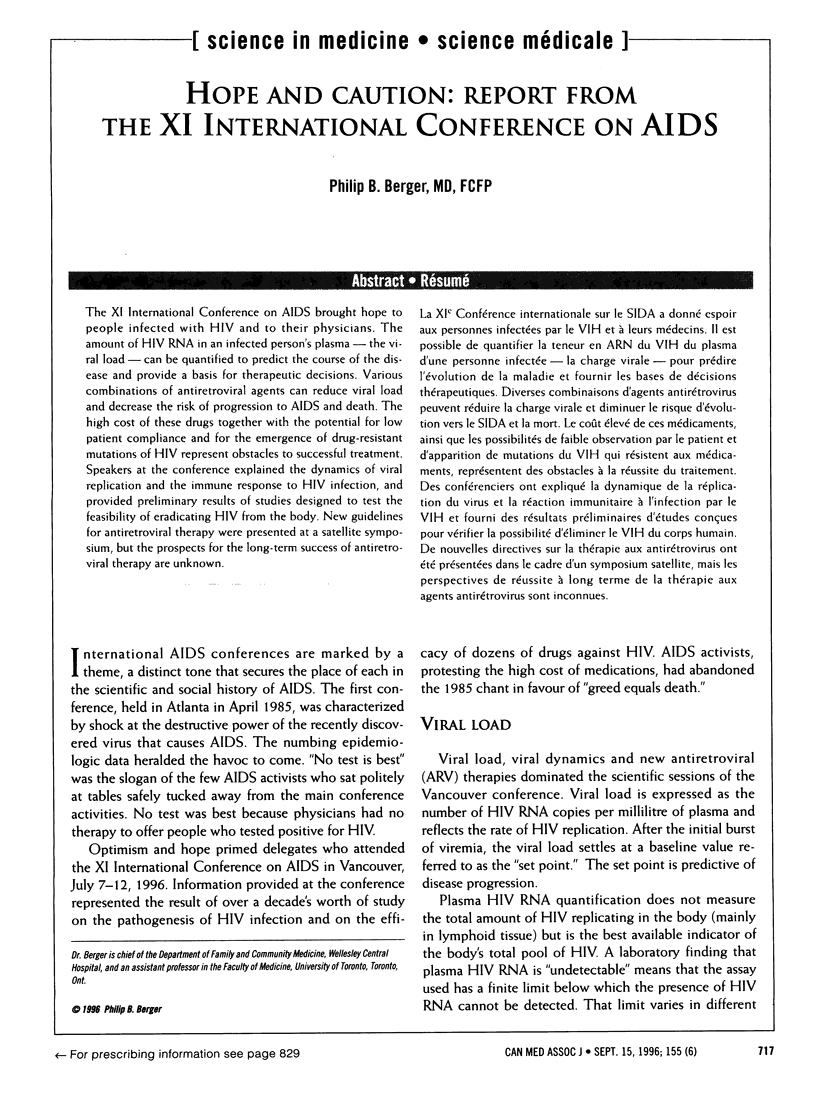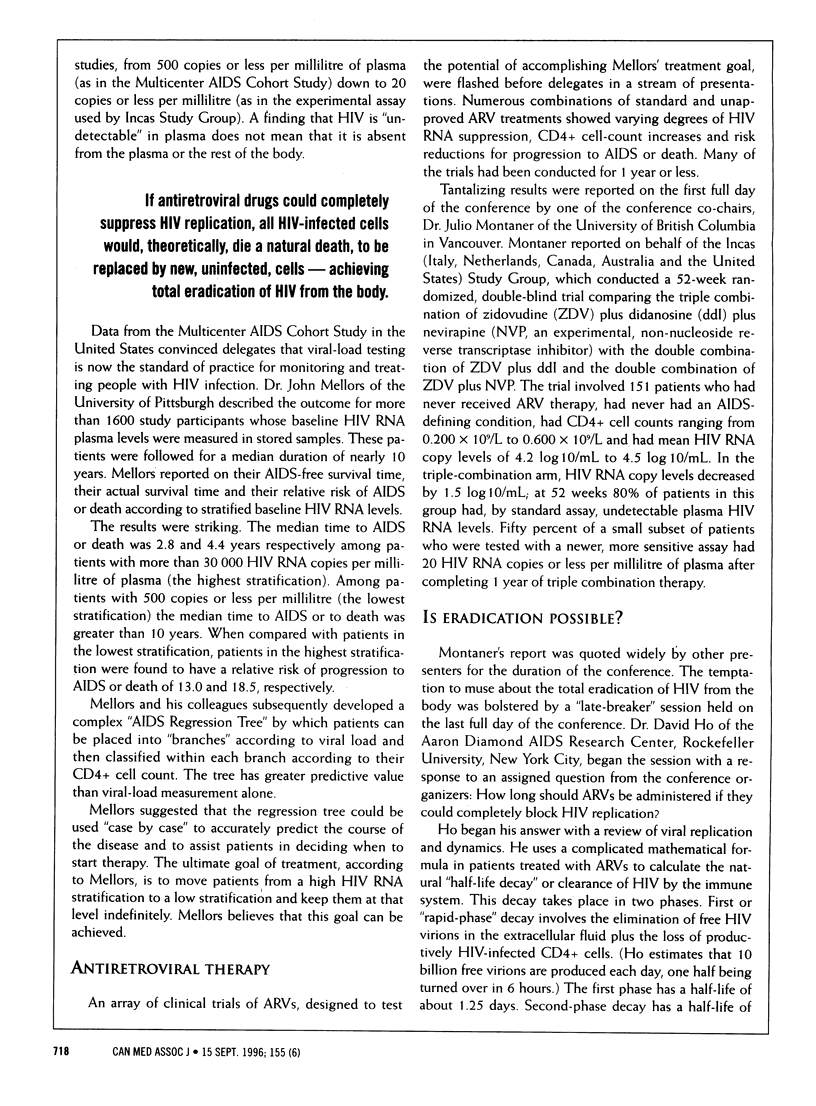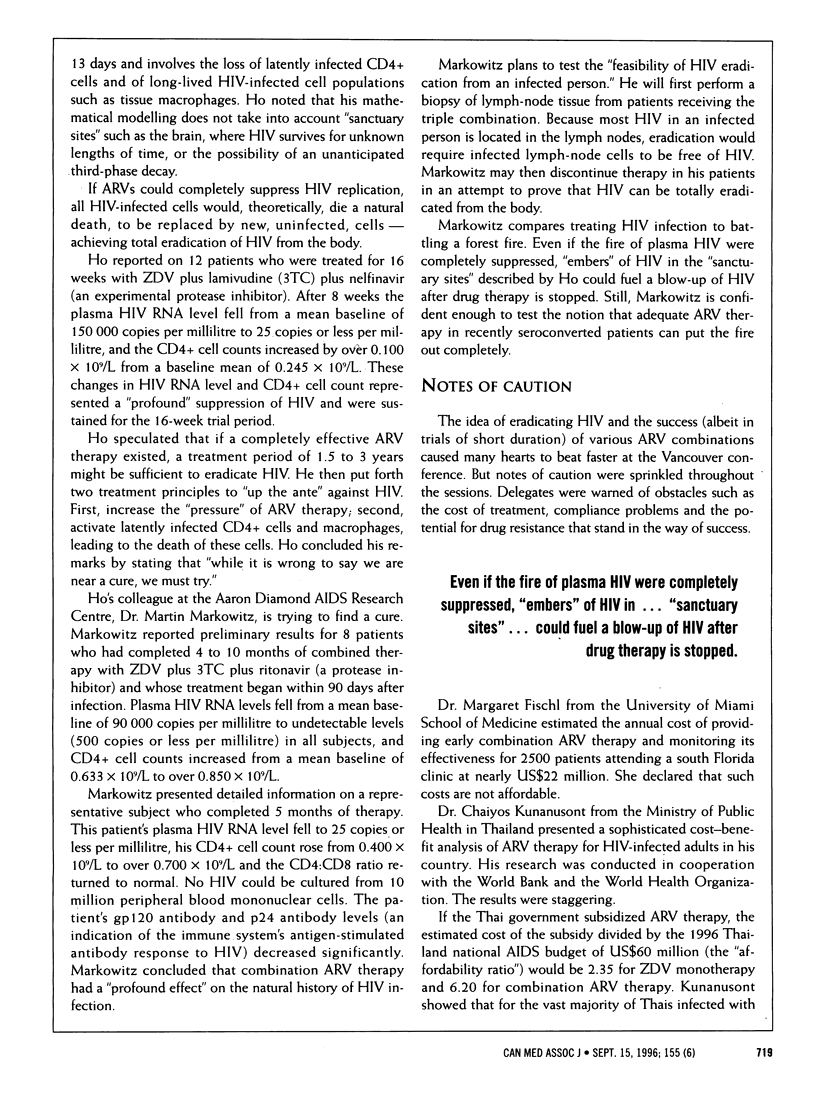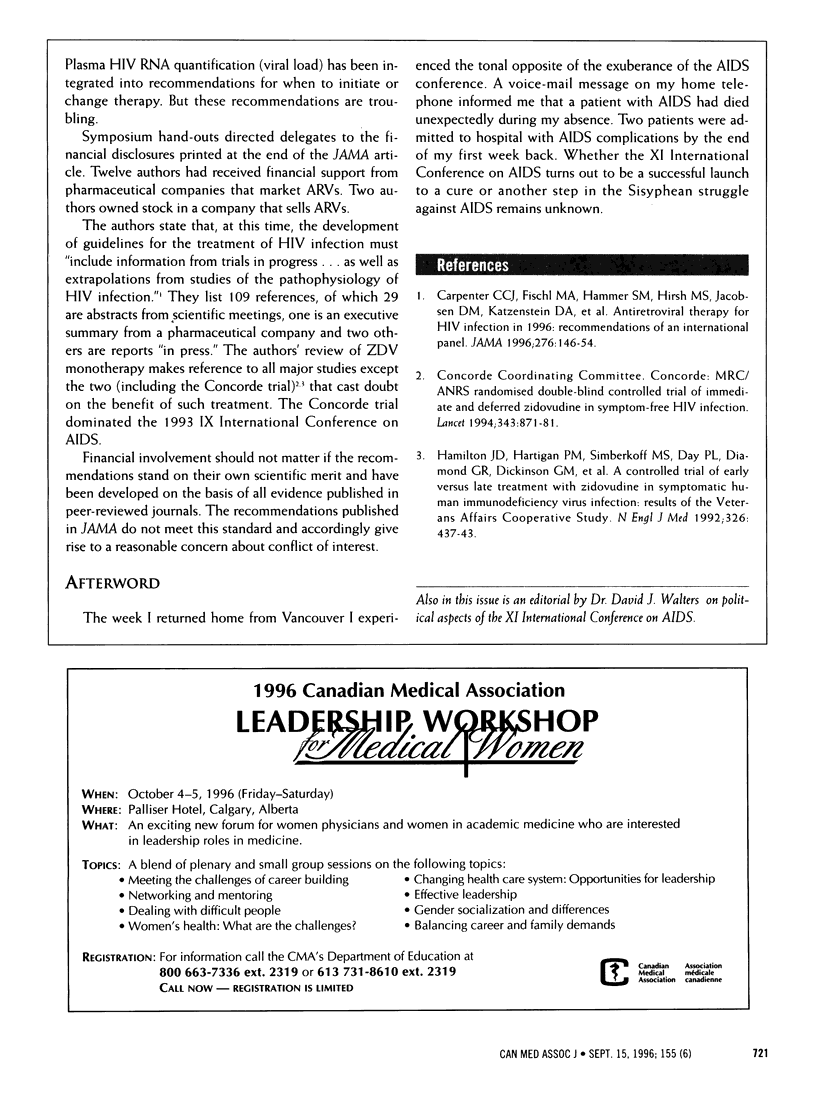Abstract
The XI International Conference on AIDS brought hope to people infected with HIV and to their physicians. The amount of HIV RNA in an infected person's plasma--the viral load--can be quantified to predict the course of the disease and provide a basis for therapeutic decisions. Various combinations of antiretroviral agents can reduce viral load and decrease the risk of progression to AIDS and death. The high cost of these drugs together with the potential for low patient compliance and for the emergence of drug-resistant mutations of HIV represent obstacles to successful treatment. Speakers at the conference explained the dynamics of viral replication and the immune response to HIV infection, and provided preliminary results of studies designed to test the feasibility of eradicating HIV from the body. New guidelines for antiretroviral therapy were presented at a satellite symposium, but the prospects for the long-term success of antiretroviral therapy are unknown.
Full text
PDF




Selected References
These references are in PubMed. This may not be the complete list of references from this article.
- Carpenter C. C., Fischl M. A., Hammer S. M., Hirsch M. S., Jacobsen D. M., Katzenstein D. A., Montaner J. S., Richman D. D., Sáag M. S., Schooley R. T. Antiretroviral therapy for HIV infection in 1996. Recommendations of an international panel. International AIDS Society-USA. JAMA. 1996 Jul 10;276(2):146–154. [PubMed] [Google Scholar]
- Hamilton J. D., Hartigan P. M., Simberkoff M. S., Day P. L., Diamond G. R., Dickinson G. M., Drusano G. L., Egorin M. J., George W. L., Gordin F. M. A controlled trial of early versus late treatment with zidovudine in symptomatic human immunodeficiency virus infection. Results of the Veterans Affairs Cooperative Study. N Engl J Med. 1992 Feb 13;326(7):437–443. doi: 10.1056/NEJM199202133260703. [DOI] [PubMed] [Google Scholar]


